Thank you! Your submission has been received!
Oops! Something went wrong while submitting the form.
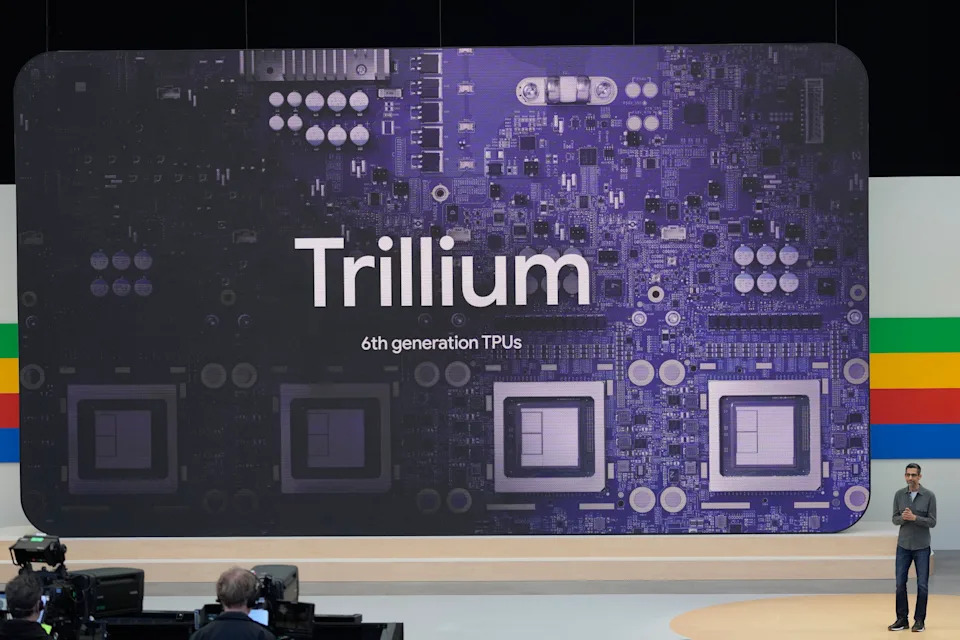
Nvidia's Big Tech customers might also be its biggest competitive threat
Key Points
- Nvidia's Dominance Challenged: Big Tech companies like Google, Amazon, Meta, and OpenAI are increasingly designing custom AI chips, potentially capturing 45% of the AI chip market by 2028, up from 37% in 2024, which could erode Nvidia's profit margins.**
- Cost and Optimization Drive: Custom chips by tech giants are cheaper and better optimized for their software, allowing lower-cost AI workload processing for internal use and cloud customers compared to Nvidia's expensive GPUs.**
- Google's Competitive Edge: Google, a leader in custom AI chips with its TPUs, has started selling them externally, positioning itself as a direct competitor to Nvidia, with analysts estimating its TPU business at $900 billion.**
- Market Growth Mitigates Threat: Despite competition, the expanding AI market offers room for both Nvidia and custom chip efforts, with analysts suggesting Nvidia will continue to grow, albeit at a slower pace than the market.**
- Challenges in Custom Silicon: Not all tech firms may succeed in custom chip development due to its complexity, potentially limiting the competitive threat to Nvidia's dominance.**
Summary
This article explores how Big Tech companies, including Google, Amazon, Meta, and OpenAI, are increasingly developing custom AI chips, challenging Nvidia's dominance in the AI chip market. These custom chips, often designed in partnership with firms like Broadcom, are cheaper and better optimized for specific software, reducing costs for internal AI workloads and cloud customers. Google, a pioneer with its TPUs, has begun selling chips externally, directly competing with Nvidia, while others like Microsoft and Amazon are at varying stages of development. Analysts predict custom chips could account for 45% of the market by 2028, up from 37% in 2024, potentially impacting Nvidia's high profit margins. However, the rapidly growing AI market may accommodate both Nvidia and its competitors, with Nvidia's extensive investments and ecosystem support ensuring continued growth, albeit at a slower rate. Challenges in custom silicon development mean not all tech giants may succeed, tempering the threat to Nvidia. CEO Jensen Huang remains confident, emphasizing Nvidia's comprehensive AI infrastructure solutions beyond individual chips.
yahoo
October 20, 2025
Stocks

To hit back at the United States in their trade war, China borrows from the US playbook
Key Points
- China's New Export Rules: Beijing has introduced export controls on rare earths, requiring foreign firms to obtain Chinese government approval to export magnets with even small amounts of China-originated rare earth materials or technology, impacting global technology supply chains.**
- Mirroring U.S. Policies: China is adopting strategies similar to the U.S. foreign direct product rule, extending control over foreign-made products, a tactic long used by Washington to limit China's access to certain technologies.**
- Trade War Escalation: Since 2018, and accelerating under recent U.S. tariffs, China has developed retaliatory tools like the Unreliable Entity List and anti-foreign sanction laws, mirroring U.S. measures to counter trade conflicts.**
- Recent Actions: In response to U.S. tariffs in 2023, China has placed U.S. companies on restrictive lists, imposed export controls on critical elements, and matched high tariffs, intensifying the trade war.**
- Risks of Reciprocity: Experts warn that while China's mirrored approach appears balanced, it risks being seen as escalation, potentially leading to a detrimental "race to the bottom" in U.S.-China relations.**
Summary
This article explores China's adoption of U.S.-style trade policies to counter American economic pressures amid an escalating trade war between the world's two largest economies. Beijing has introduced export controls on rare earths, requiring foreign firms to seek approval for exporting products containing Chinese materials or technology, significantly impacting global tech supply chains. Since 2018, and especially under recent U.S. tariffs initiated by President Trump, China has mirrored U.S. strategies like the foreign direct product rule with tools such as the Unreliable Entity List and anti-foreign sanction laws. These measures, including blacklisting U.S. companies and imposing export controls on critical elements, aim to retaliate against U.S. actions like high tariffs over issues such as fentanyl. While China's approach allows it to challenge Washington directly, experts caution that what Beijing views as reciprocity might be perceived as escalation, risking a downward spiral in relations. This tit-for-tat dynamic, fueled by both nations' expansive views of national security, underscores the complexities and dangers of the ongoing trade conflict.
yahoo
October 20, 2025
Stocks
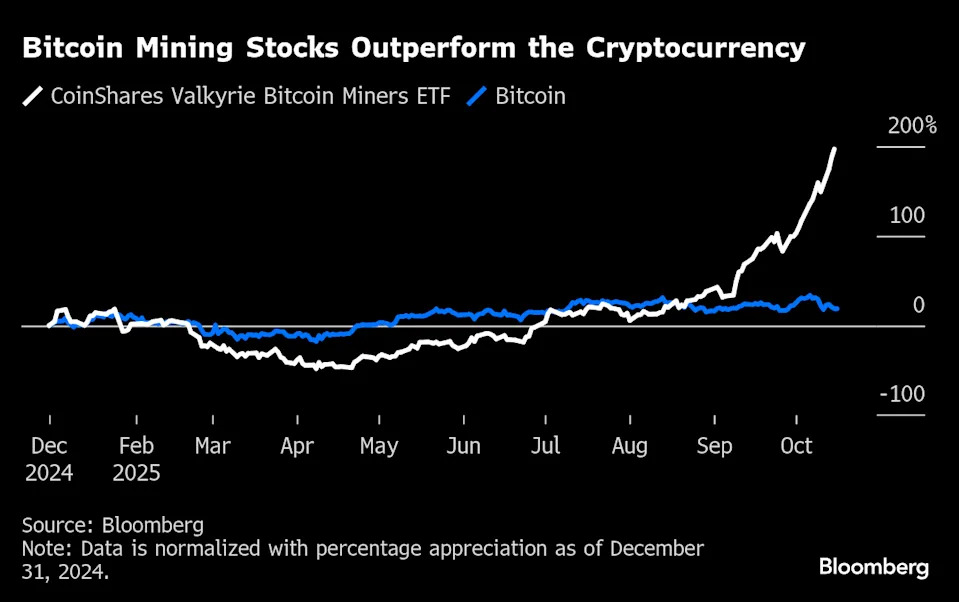
Crypto Miners Riding the AI Wave Are Leaving Bitcoin Behind
Key Points
- Bitcoin miners are outperforming Bitcoin itself, with a fund tracking listed mining firms soaring over 150% year-to-date in 2025, driven by a pivot to AI and high-performance computing (HPC).
- Companies like Cipher Mining Inc. and IREN Ltd. have seen share prices rise by 300% and 500% respectively, as they shift from pure Bitcoin mining to AI infrastructure, exemplified by major deals and convertible notes offerings.
- The pivot to AI/HPC is a response to squeezed profit margins from Bitcoin mining due to the 2023 halving, rising network difficulty, and low hashprice, pushing firms to prioritize energy efficiency over hashrate expansion.
- Analysts note that investors now value miners primarily for their AI/HPC potential, with revenue and margins significantly higher in these areas compared to traditional mining, leading to higher market multiples.
- Firms like Bitdeer Technologies are balancing mining with AI data center conversions, projecting substantial revenue growth, while others like Riot Platforms and Bitfarms pause hashrate growth to focus on energy utilization.
Summary
Bitcoin mining companies are outpacing Bitcoin's performance in 2025, with a fund tracking these firms surging over 150% year-to-date, despite Bitcoin's 14% gain and near-record highs. This success stems from a strategic pivot to artificial intelligence (AI) and high-performance computing (HPC), as miners like Cipher Mining Inc. and IREN Ltd. see share prices soar by 300% and 500%, respectively, through major AI infrastructure deals. Cipher’s $3 billion colocation agreement with Fluidstack and IREN’s $1 billion convertible notes offering highlight this shift. Bitdeer Technologies also plans to convert mining sites into AI data centers, projecting significant revenue by 2026. This transition is driven by declining mining profitability post the 2023 Bitcoin halving, which cut rewards and squeezed margins amid rising network difficulty and low hashprice. Investors now prioritize miners for their AI/HPC potential, where revenue per megawatt and margins far exceed traditional mining, leading to higher market valuations. Analysts note a focus on energy efficiency over expanding Bitcoin hashrate, with firms like Riot Platforms pausing growth to adapt to this new "energy economy." This marks a transformative phase where crypto mining and computing converge, redefining these companies as tech infrastructure providers rather than just Bitcoin miners.
yahoo
October 18, 2025
Stocks

How a company from the gilded age could be the future of US manufacturing
Key Points
- Steinway & Sons thrives in US manufacturing by focusing on high-quality, handcrafted pianos rather than mass production, allowing them to charge premium prices ($90,000 to $200,000 per piano).
- The company employs a small, skilled workforce of about 200 in Queens, New York, using domestically sourced materials, which minimizes the impact of tariffs from trade wars.
- Despite challenges like potential shortages of Sitka spruce and the need for specialized labor, Steinway remains committed to its historic Astoria factory, in operation since 1873.
- Steinway's focus on quality and innovation helps it survive high US manufacturing costs and strict regulations, setting it apart from competitors forced to compete on price.
Summary
Steinway & Sons, a 150-year-old piano manufacturer based in Queens, New York, stands as a rare success in US manufacturing amidst challenges like high costs and trade wars. Employing around 200 skilled craftsmen, including 30-year veteran Bernard Craddock, the company handcrafts world-class pianos priced between $90,000 and $200,000. Unlike mass producers, Steinway focuses on quality and innovation, using domestically sourced materials to mitigate tariff impacts from policies like those under President Trump. This approach allows them to maintain premium pricing for high-end markets, such as concert performers. Despite broader US manufacturing job losses (42,000 since April) due to tariff uncertainties, Steinway remains unaffected, taking 11 months to build each piano with meticulous care. Challenges persist, including potential shortages of Sitka spruce from Alaska and the need for specialized labor, but CEO Ben Steiner emphasizes the irreplaceable skills of their workforce as a reason to stay in Astoria. Steinway’s legacy and commitment to craftsmanship, dating back to 1873 with only brief pauses during the Great Depression and World War II, ensure its continued operation in New York City, defying trends of outsourcing and automation that have reshaped American manufacturing.
CNN
October 18, 2025
Stocks

Lower rates were supposed to bring homebuyers back this fall. Here’s why it hasn’t happened.
Key Points
- Mortgage rates are stable at around 6.3%, near year-to-date lows, but still too high to significantly motivate buyers to enter the market.
- Inventory is increasing as sellers test the market, but high home prices and rates continue to deter most buyers, creating a stalemate.
- Home sale cancellations are at a high, with 15% of contracts in August falling through, the highest rate for the month since 2017.
- Buyers are gaining slight power in some markets as inventory rises and price cuts become more common, though sellers are often unwilling to lower prices significantly.
- Many buyers are adopting a "wait and see" approach, potentially holding off until spring for lower rates or better affordability.
Summary
This year’s fall housing market has failed to rebound from its ongoing slump, despite mortgage rates stabilizing at around 6.3%, near 11-month lows, and anticipation of Federal Reserve rate cuts. While inventory is rising as sellers test the market, high home prices and rates continue to deter buyers, creating a persistent stalemate. Experts note that the slight drop in rates hasn’t significantly improved affordability, with Zillow estimating rates would need to fall to 4.43% for median-income families to afford a typical U.S. home. Cancellation rates for home sales are high, with 15% of August contracts falling through, and buyers in various regions are gaining some leverage as inventory grows and price cuts increase. However, many discretionary buyers are playing a waiting game, hoping for better conditions in spring, while sellers with low existing mortgage rates often hold firm on prices or pull listings if unmet. Real estate professionals across markets like San Antonio, Boston suburbs, and Northeast Ohio report slow sales, climbing inventory, and cautious buyers strained by affordability challenges, despite some regional price appreciation. The market remains in a state of pent-up supply and demand, with potential for shifts if prices plateau or rates drop further.
yahoo
October 18, 2025
Stocks
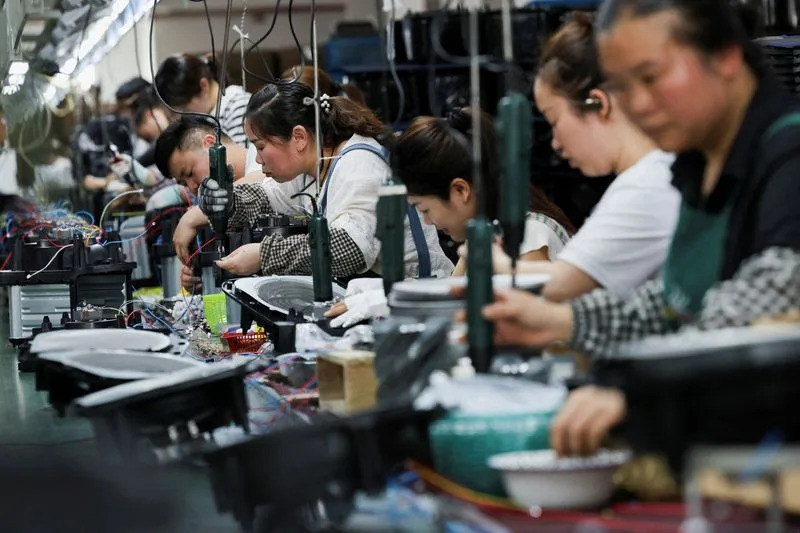
Tariff rollercoaster prompts Chinese exporters to 'give up' on US
Key Points
- Chinese exporters are shifting focus to markets in Europe, Latin America, the Middle East, and Africa due to erratic U.S. tariff policies and trade tensions.
- Exports from China grew by 7.1% to 19.95 trillion yuan ($2.80 trillion) in the first nine months of the year, despite a significant decline in U.S.-bound goods.
- Manufacturers like Jacky Ren of Gstar Electronics have largely abandoned the U.S. market, citing exhaustion from tariff fluctuations and seeking new markets to offset losses.
- Competition in new markets has intensified, eroding prices and making it challenging for exporters to remain profitable, with some selling at a loss.
- At the Canton Fair in Guangzhou, no U.S. buyers were reported among 15 companies surveyed, with increased interest from Brazil, Southeast Asia, and Europe.
Summary
Chinese exporters are pivoting away from the U.S. market amid unpredictable tariff policies and trade disputes, focusing instead on regions like Europe, Latin America, the Middle East, and Africa. Despite a significant drop in U.S.-bound goods, China's exports grew by 7.1% to 19.95 trillion yuan ($2.80 trillion) in the first nine months of the year, showcasing economic resilience ahead of third-quarter GDP data. Manufacturers like Jacky Ren of Gstar Electronics have abandoned the U.S. market, exhausted by tariff volatility, while others, like Halloween decoration maker Lou Xiaobo, report halved revenues due to insufficient global demand to replace U.S. orders. At the Canton Fair in Guangzhou, no U.S. buyers were present among surveyed companies, with increased interest from other regions. However, intensified competition in new markets has driven down prices, forcing some exporters to sell at a loss. Many, including Cherry Yuan of Foshan Greenyellow Electric Technology, express frustration with the instability of U.S. trade relations, while Cai Jing of a travel mug company notes that U.S. buyers, not exporters, have initiated the market withdrawal. This shift highlights both the adaptability and the challenges facing China's export sector in a turbulent global trade environment.
yahoo
October 17, 2025
Stocks

Sign up for Yahoo Finance's newsletters
Key Points
- Morning Brief: Yahoo Finance's flagship newsletter delivered every morning at 6 a.m. ET, featuring a key Takeaway column on market or economic themes, along with daily market insights, readings, charts, and economic calendars.**
- Breaking News: Email alerts providing significant updates on stocks, the US economy, and American business to keep subscribers informed of critical developments.**
- Week In Tech: A popular weekly newsletter focusing on tech sector updates, including trends in AI, robotics, and more.**
- Mind Your Money: A weekly newsletter offering financial tips, insights, and strategies for effective money management.**
- Daily Movers: A personalized weekday recap at the closing bell, highlighting news and the top gainers and losers in subscribers’ portfolios.**
Summary
Yahoo Finance offers a suite of newsletters designed to keep subscribers informed about financial markets, economic trends, and personal finance. The flagship Morning Brief arrives daily at 6 a.m. ET, providing a key Takeaway column on market or economic themes, alongside updates on what to watch, read, and key economic and corporate events. Other offerings include Breaking News alerts for significant updates on stocks and the US economy, and Week In Tech, a weekly newsletter covering tech sector trends like AI and robotics. For personal finance, Mind Your Money delivers weekly tips and strategies for smarter money management. Lastly, Daily Movers provides a personalized weekday recap at the closing bell, featuring news and portfolio performance highlights. Each newsletter caters to different interests, ensuring subscribers stay updated on critical financial and business developments.
yahoo
October 17, 2025
Stocks
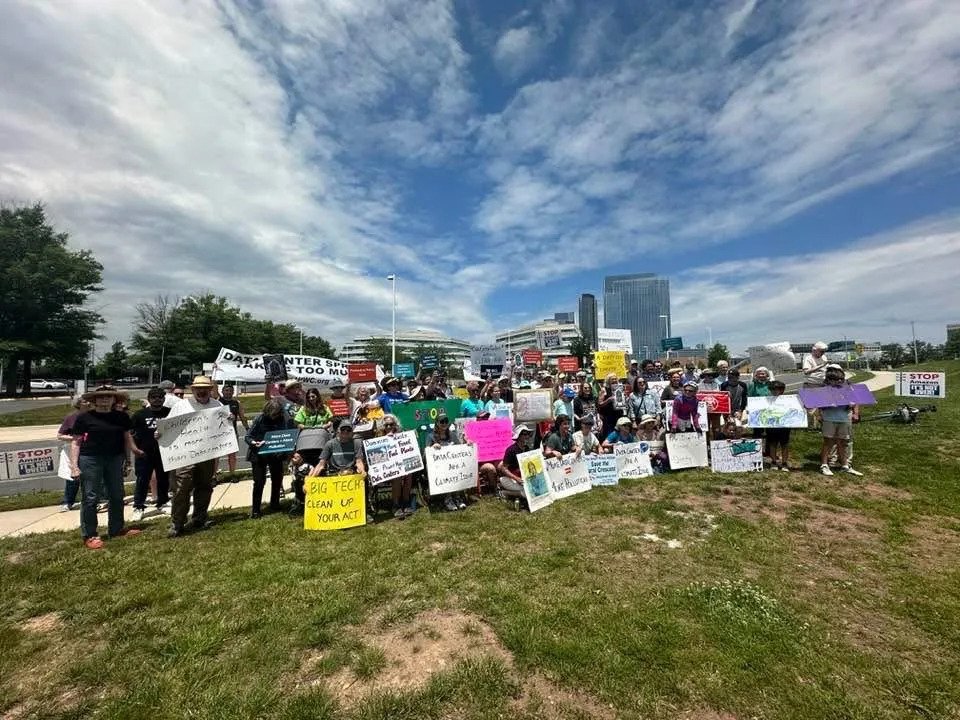
Can the AI data center boom be stopped? Meet some opponents with battle plans.
Key Points
- Rapid Expansion of Data Centers: Big Tech is aggressively expanding data centers to support AI growth, with global spending projected to reach $493 billion in 2025 and $920 billion by 2028, fueled by supportive policies like President Trump's executive order to expedite permitting.**
- Community Resistance: Local activists across 24 states have stalled or stopped $64 billion in data center projects between early 2023 and March 2025, using strategies like lawsuits, negotiations, and grassroots movements to address community impacts.**
- Environmental and Social Concerns: Data centers increase electricity costs, consume vast amounts of water, and strain infrastructure, potentially causing blackouts and water shortages, while offering limited job creation and questionable tax revenue benefits.**
- Legislative Challenges: State efforts to regulate data centers often fail, with most bills not passing, as seen in Virginia and Georgia, leaving communities to fight independently against Big Tech and local zoning changes.**
- Grassroots Success Stories: Activists like Elena Schlossberg in Virginia have inspired nationwide resistance, achieving partial wins such as forcing infrastructure burial and blocking projects through legal battles and community organizing.**
Summary
The rapid expansion of data centers by Big Tech to support AI growth is meeting resistance from local communities concerned about environmental and social impacts. With global spending on data centers projected to nearly double from $493 billion in 2025 to $920 billion by 2028, issues like soaring electricity costs, water consumption, and infrastructure strain are escalating. Critics highlight risks of blackouts and dry taps, while economic benefits like jobs and tax revenue are often overstated. Across 24 states, 142 activist groups have stalled $64 billion in projects since early 2023, employing tactics from lawsuits to grassroots campaigns. In Virginia, Elena Schlossberg’s coalition has led significant battles, achieving partial victories against projects by Amazon and Blackstone. Similar efforts in Georgia and elsewhere show mixed results, with some communities blindsided by nondisclosure agreements and zoning changes. State legislative attempts to regulate the industry largely fail, leaving locals to fend for themselves. While Big Tech touts economic gains, the fight against data centers reveals a broader struggle over community rights versus technological progress, with activists slowing—but not stopping—the AI-driven expansion.
yahoo
August 24, 2025
Stocks

Credit Fuels the AI Boom — and Fears of a Bubble
Key Points
- Massive Investments in AI Infrastructure: Credit investors are channeling billions into AI, with significant loans like $22 billion for Vantage Data Centers and $29 billion for Meta Platforms’ data center in Louisiana.**
- Concerns of an AI Bubble: Industry leaders like OpenAI’s Sam Altman draw parallels to the dot-com bubble, warning of potential investor losses, while a MIT report notes 95% of generative AI projects fail to profit.**
- Shift in Funding Sources: Initially funded by tech giants like Google and Meta, AI infrastructure is increasingly supported by bond investors and private credit markets, with private credit contributing around $50 billion quarterly.**
- Risks and Uncertainty: Analysts highlight risks in long-term funding for unproven AI technologies, with concerns about sustainability and overborrowing reminiscent of the early 2000s telecom bust.**
- Diverse Financial Instruments: AI projects are funded through various means, including corporate debt, commercial mortgage-backed securities (up 30% to $15.6 billion), and payment-in-kind loans, reflecting growing financial stress.**
Summary
Credit investors are heavily funding artificial intelligence infrastructure, with billions poured into projects like Vantage Data Centers’ $22 billion loan and Meta Platforms’ $29 billion data center in Louisiana. However, industry leaders like OpenAI’s Sam Altman warn of an AI investment bubble akin to the dot-com era, predicting potential losses for investors. A MIT report underscores this concern, revealing that 95% of generative AI corporate projects fail to generate profit. Initially self-funded by tech giants like Google and Meta, AI development now relies increasingly on bond investors and private credit markets, with the latter contributing around $50 billion quarterly. Analysts express unease about the sustainability of these investments, drawing parallels to the telecom overborrowing of the early 2000s. Funding comes through diverse channels, including corporate debt, commercial mortgage-backed securities (up 30% to $15.6 billion), and payment-in-kind loans, indicating rising financial stress. Long-term funding for unproven technologies raises questions about future cash flows, with experts cautious about the lack of historical data to predict AI’s financial viability. Despite these risks, the influx of capital from direct lenders continues unabated, driven by the massive capital needs of AI hyperscalers, positioning them as the next major infrastructure asset class.
yahoo
August 24, 2025
Stocks

Trump tariffs live updates: The US and EU agree on a written trade framework
Key Points
- US-EU Trade Framework: The US and EU finalized a trade deal framework on Thursday, maintaining a 15% US tariff on most EU imports like autos, pharmaceuticals, semiconductors, and lumber, while excluding wine and spirits.**
- EU Commitments: The EU agreed to eliminate tariffs on US industrial goods and improve market access for US seafood and agricultural products.**
- US Tariff Strategy: US Treasury Secretary Scott Bessent expressed satisfaction with current tariffs on China, anticipating tariff revenues to surpass the earlier $300 billion estimate, with funds aimed at reducing federal debt.**
- Economic Impact: S&P Global Ratings affirmed the US's AA+ credit rating, noting that tariff revenues could offset fiscal impacts from Trump's tax and spending policies, though long-term economic outcomes remain uncertain.**
- Consumer and Corporate Effects: Companies like Walmart report gradual tariff impacts on costs, expecting price increases in inventory replenishment, while consumer behavior adjustments remain muted for now.**
Summary
The US and EU finalized a trade framework on Thursday, following a July 27 agreement, imposing a 15% US tariff on most EU imports such as autos and pharmaceuticals, but excluding wine and spirits. The EU pledged to remove tariffs on US industrial goods and enhance access for US seafood and agricultural products. Meanwhile, US Treasury Secretary Scott Bessent indicated contentment with current China tariffs, projecting revenues to exceed $300 billion, aimed at reducing federal debt. S&P Global Ratings affirmed the US's AA+ credit rating, citing tariff revenues as a buffer against fiscal strain from Trump's tax and spending policies, though economic outcomes are uncertain. The impact of tariffs on consumers remains gradual, with companies like Walmart noting rising costs in inventory but minimal shifts in consumer behavior so far. Additionally, Trump's broader tariff policies, including reciprocal tariffs on various trade partners, continue to influence markets and trade relations, with key negotiations pending with Canada, Mexico, and China. The slow emergence of tariff-related inflation, hidden in global supply chains, adds complexity to predicting economic effects, as importers adjust sourcing to mitigate costs.
yahoo
August 21, 2025
Stocks
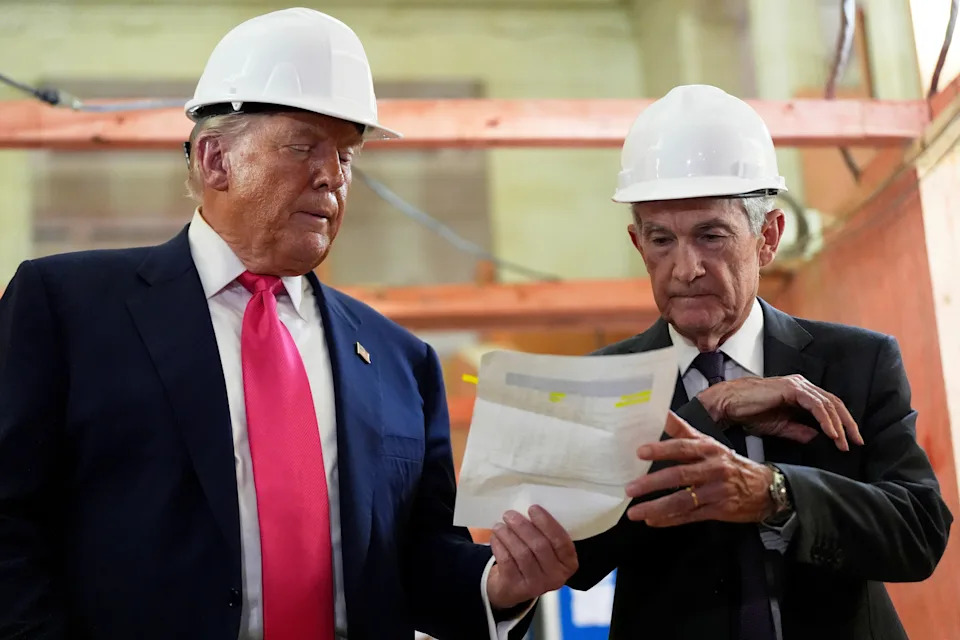
Powell's Jackson Hole speech could set up a policy tweak that lasts well beyond his tenure
Key Points
- Federal Reserve Chair Jerome Powell is set to speak at Jackson Hole, where investors anticipate signals about a potential interest rate cut next month.
- Powell is expected to announce significant changes to the Fed’s policy framework, including abandoning average inflation targeting, which allowed inflation to exceed 2% to balance past shortfalls.
- The new framework may focus on a strict 2% inflation target, reflecting lessons from recent inflation spikes and supply chain issues.
- Critics argue that the 2020 average inflation targeting strategy contributed to delayed rate hikes during post-pandemic inflation, prompting calls for a more preemptive monetary policy.
- Powell’s speech may also address enhanced policy communication and updates to the Fed’s economic projections, including the influential “dot plot.”
Summary
Federal Reserve Chair Jerome Powell’s upcoming speech at Jackson Hole is highly anticipated as investors seek clues about a potential interest rate cut next month. Beyond short-term policy signals, Powell is expected to unveil major revisions to the Fed’s policy framework, which guides its dual mandate of stable prices and maximum employment. A key change likely involves abandoning average inflation targeting—a pre-pandemic strategy allowing inflation to exceed 2% to offset past shortfalls—due to recent inflation surges and their impact on consumer sentiment. Instead, the Fed may adopt a strict 2% target. Critics, including economists and hedge fund leaders, argue that the 2020 framework contributed to delayed rate hikes during post-pandemic inflation, necessitating a more proactive approach. Powell’s speech may also address supply shocks, inflation volatility, and enhanced communication, potentially updating the Fed’s economic projections like the “dot plot.” These changes, part of a five-year policy review cycle, could shape monetary policy for years beyond Powell’s tenure, which ends in May next year, cementing his legacy at the central bank.
yahoo
August 20, 2025
Stocks
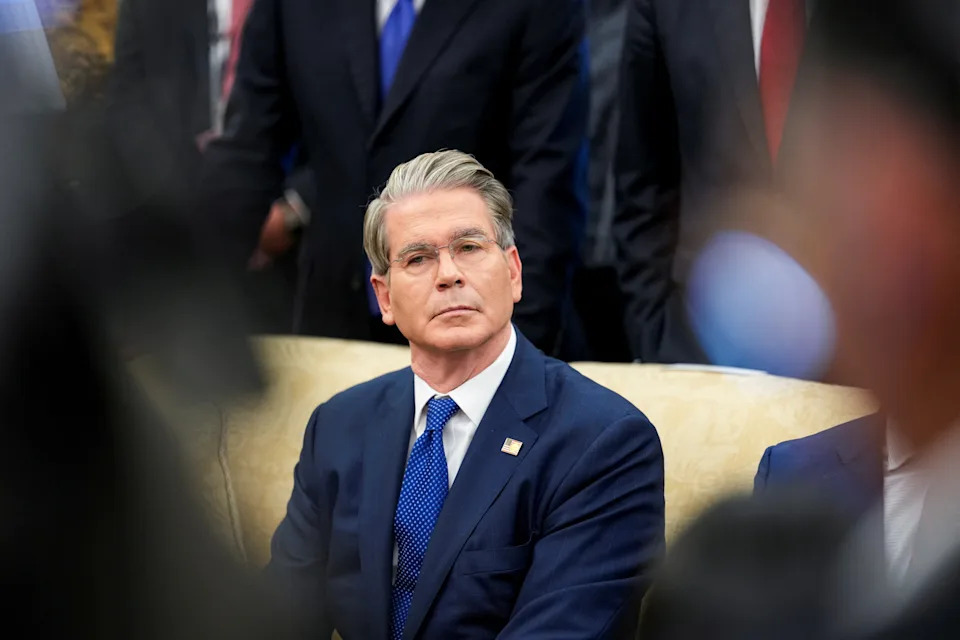
SoftBank and Trump may not be enough to save Intel
Key Points
- Intel (INTC) shares surged nearly 7% after SoftBank Group announced a $2 billion investment in the struggling chipmaker.
- The Trump administration is considering converting $10.9 billion in CHIPS Act grants into an equity stake in Intel to bolster its US manufacturing.
- Intel faces significant challenges, including cash losses in manufacturing, declining market share, and lagging in the AI chip race against competitors like AMD and Nvidia.
- Despite investments, analysts remain skeptical about Intel's recovery, citing deeper issues beyond funding and struggles in its Foundry business.
- Intel's geopolitical importance as the only major US-based leading-edge chip manufacturer underscores the government's interest in its stabilization.
Summary
Intel (INTC) saw a nearly 7% stock increase following SoftBank Group's $2 billion investment announcement, alongside reports of the Trump administration potentially converting $10.9 billion in CHIPS Act grants into an equity stake to support Intel’s US manufacturing. Once an industry leader, Intel is grappling with severe challenges, including cash-bleeding manufacturing operations, loss of market share to rivals like AMD and Nvidia, especially in AI chips, and a market cap drop to $111 billion from over twice that in 2021. Under new CEO Lip-Bu Tan, the company has cut 15% of its workforce and delayed European plant expansions. Despite its Foundry business struggles and delays in new technology rollouts like the 18A node, Intel remains geopolitically significant as the only major US-based advanced chip manufacturer. However, analysts express doubt over whether these investments will suffice, with some estimating a need for up to $40 billion for next-gen tech. While short-term government involvement could position Intel favorably, long-term entanglement risks inefficiencies and stifled innovation, prompting hopes for eventual government divestment if Intel regains stability.
yahoo
August 20, 2025
Stocks

The Fed is expected to cut rates. Don't expect mortgage rates to follow.
Key Points
- Mortgage rates rose last fall despite Federal Reserve interest rate cuts, and a similar trend could occur with upcoming cuts as current rates already reflect market expectations at 6.58%, the lowest since October 2024.
- Mortgage rates are influenced by factors like 10-year Treasury yields and market expectations, not directly tied to Fed rate cuts, leading to unpredictable movements.
- Economic data releases on hiring and inflation before the Fed’s September 16-17 meeting could cause rate fluctuations, despite an 85% chance of a rate cut being priced into current rates.
- Industry professionals note frustration as clients delay decisions hoping for lower rates, missing potential savings, while experts advise against trying to time the market due to its unpredictability.
Summary
When the Federal Reserve cut interest rates last fall, mortgage rates unexpectedly increased, and a similar pattern might emerge with anticipated cuts in September. Currently at 6.58%, the lowest since October 2024, mortgage rates already reflect market expectations of Fed actions, as per CME FedWatch’s 85% probability of a cut. Unlike debt tied to the prime rate, mortgage rates are driven by 10-year Treasury yields and other market factors like inflation expectations and bond demand, making their response to Fed moves indirect and unpredictable. Upcoming economic data on hiring and inflation could cause rate swings before the Fed’s September 16-17 meeting. Mortgage professionals express frustration as clients delay decisions, hoping for further drops, often missing out on savings. Experts like Chen Zhao from Redfin warn that waiting might be futile amid expected volatility, while loan officers advise focusing on affordability rather than timing the market. With rates having peaked over 7% in May, buyers now have more purchasing power, yet the unpredictability of rates remains a key challenge, as highlighted by industry voices who stress there’s no “crystal ball” for forecasting rate movements.
yahoo
August 16, 2025
Stocks
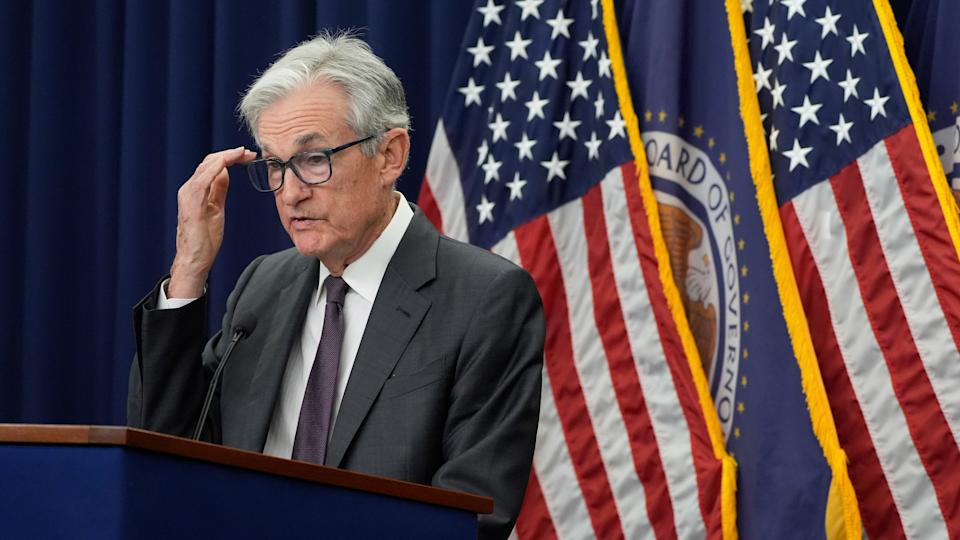
US economic data shows growth is moderating. That's the good news.
Key Points
- Mixed Economic Signals: Recent economic data presents a complex picture with modest consumer inflation, higher-than-expected producer inflation, low firings but minimal hiring, and retail sales growth despite missing Wall Street's high expectations.**
- Economic Resilience Amid Uncertainty: Despite a slowing economy and uncertainties like tariffs, the US economy shows resilience with retail sales recovering and consumer sentiment stabilizing after earlier fears.**
- Labor Market Concerns: July jobs data revealed fewer job additions and a rising unemployment rate, compounded by harsh revisions to prior months, indicating labor market weakness.**
- Inflation and Fed Expectations: Inflation data is mixed, but the Federal Reserve is expected to begin rate cuts this fall, signaling a response to economic slowdown.**
- Tariff Impacts Looming: While current retail spending has rebounded, economists warn of future consumer demand drag due to the lagged effects of tariffs, which may hit pocketbooks harder soon.**
Summary
This Yahoo Finance Morning Brief article by Hamza Shaban discusses the current state of the US economy amidst mixed signals from recent data. Inflation shows modest consumer pressures but higher producer costs, while labor data indicates low firings yet minimal hiring. July retail sales grew for two consecutive months, though slightly below expectations, reflecting consumer recovery after a spring spending drop. Despite a slowing economy, there’s resilience, with sentiment and sales stabilizing post earlier tariff fears. However, July jobs numbers disappointed with fewer additions and a rising unemployment rate, worsened by past revisions. Inflation’s mixed signals haven’t deterred expectations of Federal Reserve rate cuts this fall. Consumer sentiment soured in August over inflation fears, though not to earlier crisis levels. Economists warn of future challenges from tariffs, predicting a drag on demand as costs eventually reach consumers. Meanwhile, markets remain optimistic, focusing on rate cuts and downplaying tariff impacts, with major indices like the S&P 500 and Nasdaq hitting records, and the Dow nearing one. The article underscores a twitchy yet leveling economy, navigating shocks and recoveries in an orderly fashion, though regular maintenance via policy adjustments is needed.
yahoo
August 16, 2025
Stocks
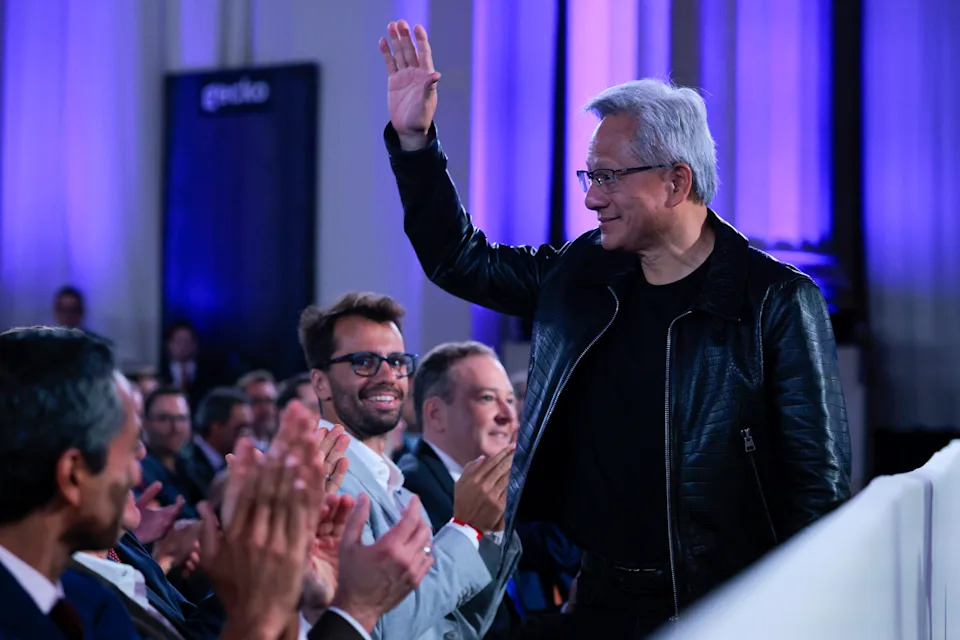
With Nvidia's Q2 earnings in sight, Trump deal could boost outlook
Key Points
- US Government Deal: President Trump confirmed that the US government will receive 15% of Nvidia's H20 chip sales to China and 15% of AMD's China revenue, a reduction from an initial 20% demand, as negotiated by Nvidia CEO Jensen Huang.**
- China Market Dynamics: Despite China urging companies to avoid Nvidia chips, there remains high demand for Nvidia and AMD products, though local Chinese alternatives are emerging with competitive performance.**
- Long-Term Strategy: Access to the Chinese market is crucial for Nvidia's future, as developers rely on its CUDA software ecosystem, making switching to competitors costly and challenging.**
- Financial Impact: The 15% payment to the US government won't appear in Nvidia's Q2 earnings but could influence Q3 outlook; Nvidia also faces an $8 billion Q2 hit due to prior H20 chip bans.**
- Potential Developments: Trump is considering allowing a degraded version of Nvidia’s Blackwell chip for China, which could boost future revenue, though immediate sales impacts are delayed until Q3 or Q4.**
Summary
This article discusses a significant development for Nvidia (NVDA) and AMD, as President Trump announced that the US government will take 15% of their sales revenue from China, a deal negotiated down from 20% by Nvidia CEO Jensen Huang. Despite China discouraging the use of Nvidia chips, demand remains strong, though local competitors are gaining ground. Access to China is vital for Nvidia's long-term strategy, given its entrenched CUDA software ecosystem, which discourages developers from switching to rivals. However, US restrictions on chip capabilities could push Chinese developers toward local alternatives like Huawei, raising national security concerns if the US market is excluded. Financially, Nvidia faces an $8 billion Q2 earnings hit from prior H20 chip bans, with the new 15% fee likely to be passed to customers and not reflected until Q3 or Q4. Trump is also considering allowing a downgraded Blackwell chip for China, potentially boosting future revenue. Analysts highlight Nvidia's ecosystem advantage but warn of risks if US policies hinder scalability, potentially splitting the global AI market between US and Chinese firms.
yahoo
August 16, 2025
Stocks

Trump Says Up to Zelenskiy to Make Deal After Summit With Putin
Key Points
- Productive Meeting: US President Donald Trump described his summit with Russian President Vladimir Putin in Anchorage, Alaska, as "extremely productive," though no final deal was reached to end the war in Ukraine.**
- Pressure on Zelenskiy: Trump emphasized that Ukrainian President Volodymyr Zelenskiy must take responsibility to "make a deal" to resolve the conflict, while also urging European nations to get involved.**
- Unresolved Issues: Despite progress on many points, Trump noted a few significant sticking points remain unresolved, though he refrained from providing specific details.**
- Future Mediation: Trump expressed intentions to facilitate a meeting between Putin and Zelenskiy, highlighting the potential to save lives if a resolution is achieved.**
Summary
US President Donald Trump met with Russian President Vladimir Putin in Anchorage, Alaska, on August 15, for a highly anticipated summit aimed at addressing Russia’s war in Ukraine. Trump described the discussions as "extremely productive," though no concrete agreement was finalized. In a subsequent Fox News interview, he highlighted unresolved "significant items" but remained optimistic about reaching a deal, placing pressure on Ukrainian President Volodymyr Zelenskiy to resolve the conflict and urging European involvement. Despite the extended face-to-face meeting—the longest between the two leaders—both refrained from sharing specifics, raising concerns in European capitals and Kyiv about potential agreements sidelining their input. Trump also expressed interest in mediating a future meeting between Putin and Zelenskiy to save lives. Meanwhile, critics and analysts noted a lack of substance in the summit’s outcomes, with some suggesting Putin gained an advantage by securing a meeting on US soil without concessions like a ceasefire. European allies remain anxious about territorial deals without Kyiv’s consent, while Putin aims to reset US-Russia relations and seek sanctions relief amid domestic economic challenges.
yahoo
August 16, 2025
Stocks